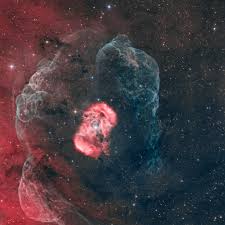Today’s Current Affairs: 29th April 2024 for UPSC IAS exams, State PSC exams, SSC CGL, State SSC, RRB, Railways, Banking Exam & IBPS, etc
Table of Contents
Shenzhou-18 Mission : China

China launched the Shenzhou-18 spacecraft carrying a three-member crew to its orbiting Tiangong space station. The mission is part of China’s ambitious space program, which aims to put astronauts on the moon by 2030.
- The Shenzhou-18 spacecraft lifted off from the Jiuquan Satellite Launch Center in northwestern China atop a Long March 2-F rocket.
- The crew, consisting of Commander Ye Guangfu and fighter pilots Li Cong and Li Guangsu, is expected to reach the space station about six-and-a-half hours after liftoff.
- Mission Objectives : During their six-month stay on the Tiangong space station, the Shenzhou-18 crew will:
- Conduct scientific tests
- Install space debris protection equipment
- Carry out payload experiments
- Popularize science education
- The crew will relieve the Shenzhou-17 team, which has been staffing the space station since October 2023.
Gandhi Sagar Wildlife Sanctuary : South Africa Delegation Visit

South African delegation recently visited the Gandhi Sagar Wildlife Sanctuary in Madhya Pradesh to assess its readiness for the release of five to eight cheetahs later this year.
- This visit is part of the planning for Project Cheetah, which aims to reintroduce cheetahs into the sanctuary.
- The focus is on breeding and favourable weather conditions.
- The Gandhi Sagar Wildlife Sanctuary is situated on the northern boundary of Mandsaur and Nimach districts in Madhya Pradesh.
- It shares its border with the state of Rajasthan.
- Much of the sanctuary consists of vast open landscapes with sparse vegetation and rocky terrain, interspersed with small patches of dense forests.
- The Chambal River flows through the sanctuary, dividing it into two parts.
- The forest of this sanctuary is part of Khathiar-Gir dry deciduous forest thus here we will find trees like Salai, Kardhai, Dhawda, Tendu, Palash etc.
- The sanctuary is home to various wildlife species.Some of the easily sighted animals include chinkara (Indian gazelle), Nilgai, and sambar.
- The Indian leopard, langur, Indian wild dog, peacock, otter, and Mugger crocodile inhabit the region.
- World famous Chaturbhuj Nala rock shelters are also part of the same Gandhi Sagar wildlife sanctuary.
- Gandhi Sagar Wildlife Sanctuary in Madhya Pradesh, India, is being prepared as a second home for cheetahs as part of the Cheetah Reintroduction Project.
Climate Technology Centre And Network (CTCN) : 10-Year Anniversary

The Climate Technology Centre and Network (CTCN) celebrates its 10-year anniversary as a key player in advancing climate technology and innovation.
- Climate Technology Centre and Network (CTCN) established as the implementation arm of the United Nations Framework Convention on Climate Change (UNFCCC) Technology Mechanism and hosted by the UN Environment Programme (UNEP), the CTCN facilitates the development and transfer of environmentally sound technologies for low-carbon and climate-resilient development.
- It operates through a global network of over 760 civil society, finance, private sector, and research institutions, providing technical assistance and capacity building to developing countries upon request.
- Over the past decade, the CTCN has funded over 300 technical assistance projects across 112 developing nations, supporting them in meeting their sustainable development commitments under the Paris Agreement.
- Through projects spanning various sectors such as green building standards, drought risk modelling, industrial energy efficiency, and policy development for e-mobility, the CTCN aims to catalyse climate resilience and innovation globally.
30th Anniversary Of The Marrakesh Agreement:

The World Trade Organization (WTO) commemorates the 30th anniversary of the Marrakesh Agreement, a milestone in global trade cooperation
- The Marrakesh Agreement, also known as the Agreement Establishing the World Trade Organization (WTO), was signed on April 15, 1994, in Marrakesh, Morocco by 123 nations.
- The agreement defines the WTO’s structure, functions, and scope, and incorporates agreements negotiated under the General Agreement on Tariffs and Trade (GATT) and agreements concluded during the Uruguay Round.
- The WTO officially came into existence on January 1, 1995.
Dragon’s Egg Nebula:

Astronomers have been puzzled by a nebula, nicknamed the Dragon’s Egg, which comprises a cloud of gas and dust enveloping a binary star system.
- The Dragon’s Egg Nebula formed due to the intense stellar winds emitted by a massive, hot central star.
- One of the stars in the pair of binary stars has a magnetic field, while the other does not, which is unusual for massive stars.
- The magnetic star is about 30 times more massive than the Sun, while its companion is about 26.5 times more massive than the Sun.
- The researchers believe the system started as a triple star system about 4-6 million years ago.
- The merger of the two innermost stars ejected gas and dust into space, forming the nebula around 7,500 years ago.
- The nebula contains an unusually large amount of nitrogen due to the merger.
Indian Historical Records Commission : New Logo And Motto

The Indian Historical Records Commission (IHRC) has adopted a new logo and motto.
- The logo shape resembles lotus petals, the Sarnath pillar in the middle of the logo represents India’s ancient past, while the brown color theme emphasizes IHRC’s mission of preserving, studying, and honoring India’s historical records.
- Motto: “Where history is preserved for the future,” reflects the IHRC’s commitment to identifying, collecting, cataloging, and safeguarding historical documents and manuscripts for present and future generations.
- The IHRC was established in 1919
- It is headed by the Union Minister of Culture, serving as an all-India forum for creators, custodians, and users of historical records.
Sympathetic Solar Flare : Observed

A rare “super-sympathetic” solar flare event featuring four simultaneous eruptions, was recently observed by astronomers.
- A solar flare is an intense burst of radiation coming from the release of magnetic energy associated with sunspots.
- They are our solar system’s largest explosive events.
- They are seen as bright areas on the sun, and they can last from minutes to hours.
- In a matter of just a few minutes, they heat the material to many millions of degrees and produce a burst of radiation across the electromagnetic spectrum, including from radio waves to x-rays and gamma rays.
- Although solar flares can be visible in white light, they are often more readily noticed via their bright X-ray and ultraviolet emissions.
- The intense radiation emitted during a solar flare can affect satellite communications, disrupt radio signals, and even pose a risk to astronauts in space.
- Additionally, the increased solar radiation can lead to geomagnetic storms, which may impact power grids and cause auroras (northern and southern lights) at lower latitudes.
- Sympathetic Solar Flare occurs when sunspots or filaments are invisibly linked by massive magnetic field loops that arch above the solar surface. When one flare detonates, the others follow in rapid succession.
- Sympathetic solar flares typically involve just two linked flares, ranging in intensity from minor outbursts to X-class flares, the most powerful class of solar flares.
Asset Reconstruction Companies : RBI

The Reserve Bank of India (RBI) recently released a master direction for Asset Reconstruction Companies (ARCs).
- Asset Reconstruction Companies (ARCs) is a specialized financial institution that purchases the bad debts of a bank at a mutually agreed value and attempts to recover those debts or associated securities by itself.
- They are registered under the RBI and regulated under the Securitisation and Reconstruction of Financial Assets and Enforcement of Securities Interest Act, 2002 (SARFAESI Act, 2002).
- They function under the supervision and control of the RBI.
- As per the RBI, ARC performs the functions namely Acquisition of financial assets, Change or takeover of Management or Sale or Lease of Business of the Borrower, Rescheduling of Debts, Enforcement of Security Interest and Settlement of dues payable by the borrower.
- They take over a portion of the bank’s debts, which qualify as Non-Performing Assets (NPAs).
- Therefore, ARCs are involved in the business of asset reconstruction, securitisation, or both. All the rights previously held by the lender (the bank) in regard to the debt are transferred to the ARC.
- The required funds to purchase such debts can be raised from Qualified Buyers.
- Qualified Buyers include Financial Institutions, Insurance companies, Banks, State Financial Corporations, State Industrial Development Corporations, trustee or ARCs registered under SARFAESI and Asset Management Companies registered under SEBI that invest on behalf of mutual funds, pension funds, FIIs, etc.
- The Qualified Buyers are the only persons from whom the ARC can raise funds.
Bambi Bucket : Indian Air Force

Indian Air Force’s MI 17 V5 helicopter was deployed to extinguish the raging forest fires in Nainital and the helicopter used a “Bambi Bucket”.
- Bambi Bucket is also known as helicopter bucket or a It is a specialised aerial firefighting tool which has been in use since the 1980s.
- It is suspended by cable under a chopper, and which can be filled by lowering into a river or pond before being flown above a fire and discharged aerially by opening a valve at the bottom of the bucket.
- It is essentially a lightweight collapsible container that releases water from underneath a helicopter to targeted areas.
- One of its key features is that it can be quickly and easily filled.
- The bucket can be filled from various sources, including lakes and swimming pools, which allows firefighters to swiftly refill it and return to the target area.
- It can be stored within the helicopter until development and it discharges a solid column of water, “resulting in a more accurate and effective water dump, less evaporation on the descent and greater impact force.
- It is especially helpful in fighting wildfires that are difficult or impossible to reach from the ground.
Network As a Service:

In a world of hyper-connectivity, network as a service promises to deliver a better day-to-day user experience.
- Network as a Service (NaaS) is a cloud service model in which customers rent networking services from a cloud vendor instead of setting up their own network infrastructure.
- It allows customers to operate their own networks without maintaining their own networking infrastructure.
- Like other cloud services, NaaS vendors run networking functions using software, essentially allowing companies to set up their own networks entirely without hardware. All they need is Internet connectivity.
- It is a flexible, scalable, and affordable option for organizations since it enables them to allocate network resources as needed.
- It can replace other networking systems that often require more work and provide less agility, such as virtual private networks (VPNs) and multiprotocol label switching (MPLS).
- In addition, by using NaaS, you can shift your networking system to your provider, who can also give you security services to keep your network environment safe.
- This means you don’t have to invest in on-premise firewalls and other security appliances.
Biohacking :

Biohacking is picking up in India especially in metro cities like Delhi and Mumbai
- Biohacking is a term used to describe various tips and tricks for enhancing the body’s ability to function at peak performance—and maybe even extend one’s lifespan.
- It includes the practice of employing methods drawn from fields like biology, genetics, neuroscience and nutrition to enhance physical or mental performance, improve overall health and well-being, or achieve a specific health outcome.
- Most types of biohacking generally fall into one of the following categories below:
- Lifestyle: It focuses on making positive health and behavior choices. It is probably the most accessible way most people can start experiencing biohacking, as it includes factors like dietary shifts, breathwork, meditation and exercise.
- Molecular: It involves the use of natural and synthetic molecules that can help shift one’s biology. Taking supplements would fall into this biohacking category.
- Biologics: These are biological products that are meant to improve or enhance biology. They could be cells, or they could be small little information packets like exosomes, which are basically biological bundles of DNA, mRNA proteins and growth factors. Biologics typically need to be ingested, injected (such as stem cells) or delivered intravenously (i.e. by IV transfusion).
- Technology: It includes devices like wearables (such as smartwatches) and diagnostics (such as blood sugar monitors). In such cases, biohacking uses technology to gather data about the body and its functioning so an individual can use that information to adjust their health as they strive for improved performance.




